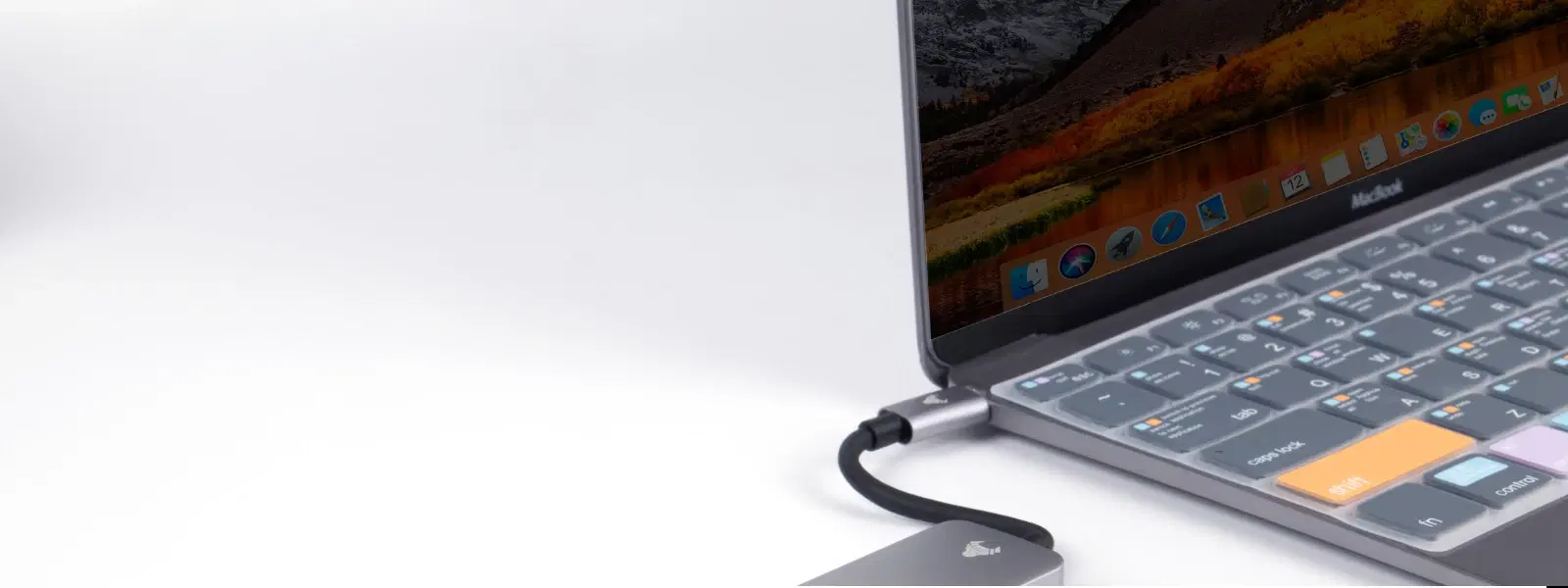
Consumer Electronics
•03 min read
Ever struggled with formatting your USB drive on a Mac? Whether you want to prepare the drive for a specific file system or simply erase its contents, the process can seem daunting without the right guidance. This blog post serves as your ultimate FAQ-style guide to formatting USB drives on Mac. You'll learn everything from the basics of file systems to step-by-step instructions using the Mac Disk Utility, ensuring you are fully equipped to handle any USB formatting scenario.
Formatting a USB drive essentially means erasing all the data stored on it and setting up a new file system for future use. This process may be needed if you want to clear data, fix read-only errors, or prepare the drive for use with different operating systems. Common scenarios include preparing a USB drive for use on both Mac and Windows systems or simply giving it a fresh start for file storage.
The file system determines how data is stored and retrieved on your USB drive. Options like FAT32, exFAT, and APFS each have their advantages. FAT32 is great for smaller file transfers and broad compatibility, exFAT supports larger files and modern devices, and APFS is optimised for use with the latest Mac systems. It’s important to select the right file system based on your specific needs to ensure maximum compatibility and system performance.
Formatting your USB drive on Mac with Disk Utility is both easy and efficient. Begin by opening Finder and navigating to Applications, then Utilities, and finally Disk Utility. Once open, follow these simple steps:
Select the USB drive listed on the left panel.
Click the 'Erase' button at the top of the window.
Choose your preferred file system from the dropdown menu.
Name the drive appropriately and confirm to start the process.
It is crucial to select a file system that matches your usage requirements. If you often work across different operating systems, choosing exFAT is generally a safe bet since it supports larger file transfers while retaining cross-platform compatibility. For more specific uses, such as a drive solely dedicated to your Mac, switching to APFS might offer optimised performance and enhanced security.
Expert Tip: Choosing the Best File System for Your Needs
Did you know? FAT32 is ideal for smaller file transfers across Mac and Windows, while exFAT supports larger files, making it perfect for modern devices.
If your drive appears as read-only, it might prevent you from making modifications. To resolve this, try using Disk Utility to erase any partitions or reformat the drive entirely. Sometimes adjusting the permissions or using Terminal for a more robust approach can also help. If you frequently shop with Tata Neu, remember that our platform offers seamless tech support and rewards NeuCoins with every transaction, reflecting our commitment to a customer-first experience.
At times, you might encounter errors such as 'Disk Utility can't erase the drive' or the drive simply not being recognised. In these cases, double-check your connection and ensure any active processes or files are closed. Restarting your Mac and attempting the process again can also sometimes resolve these issues. A calm, step-by-step approach is key to overcoming these hurdles.
For more experienced users, Terminal offers an alternative method for formatting a USB drive. One useful command is diskutil eraseDisk, which allows for precise control over the drive formatting process. Always exercise caution while using Terminal, as it provides powerful commands that directly affect your system's configuration.
If you need your drive to work seamlessly between Mac and Windows systems, choose a file system like exFAT. Using Disk Utility, format the drive and then test its compatibility on a Windows device. This method ensures that you have a drive that truly meets your cross-platform requirements and is reliable for file sharing.
Open Disk Utility, select the USB drive, click 'Erase', and choose FAT32 as the file system. Confirm the process to format the drive.
Use Disk Utility to erase all data by selecting the USB drive, clicking 'Erase', and choosing the desired file system. This process removes partitions and resets the drive.
Follow the same steps as formatting a USB drive: use Disk Utility, select the external drive, and erase it with the appropriate file system.
Use Disk Utility to erase the drive. If the problem persists, adjust permissions or use Terminal commands to override read-only settings.
Formatting a USB drive on Mac doesn't have to be complicated. By understanding various file systems, mastering the use of Disk Utility, and knowing how to troubleshoot common issues, you can efficiently prepare your drive for any task. With clear guidance, you’re one step closer to a stress-free tech experience. Explore more consumer electronics guides to enhance your tech skills and discover innovative ways to benefit from your devices, while enjoying the added advantage of NeuCoins rewards that make every transaction even more rewarding.